The First Star: Thirty Years Ago The U.S. Women’s National Team Won the First Ever FIFA Women’s World Cup
Thirty Years Ago the U.S. Women’s National Team won the First Ever FIFA Women’s World Cup



As Michelle Akers dribbled toward an inviting and tantalizing open net in the waning minutes of a deadlocked match in the first FIFA Women's World Cup Final three decades ago, for some teammates it felt like an eternity.
The U.S. Women's National Team striker had just intercepted a back pass to Norwegian defender Tina Svensson and rounded goalkeeper Reidun Suth in the left side of the penalty area. Akers possessed the ball on her left foot but took an extra second to transfer it to her more comfortable right foot.
"I was thinking the whole time, 'Just kick it in the goal,' " midfielder Carin Gabarra said. "But I think she wanted to make sure she was going to put it on frame."
Team captain April Heinrichs was just to the right behind Akers. "What surprised me is that she deliberately took more touches than she needed, because she was exquisitely technical, and she didn't need it," she said. "She was in charge of the world at that very moment."
And the first Women’s World Cup.
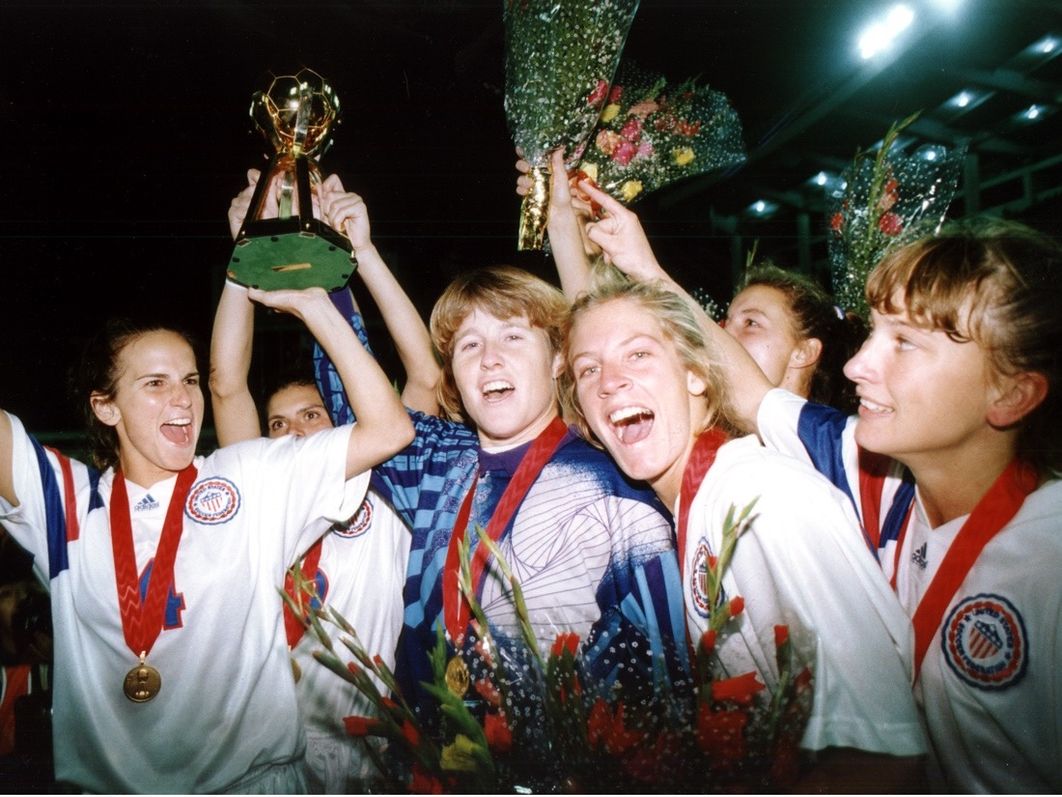

Akers slotted the ball into the net with two minutes remaining (in what was, remarkably to think nowadays, an 80-minute game) to give the Americans a 2-1 victory over archrival Norway in Guangzhou, China on Nov. 30, 1991.
"Everyone told me afterwards their hearts were stopping because they didn't think I would ever shoot the ball," Akers said at the time. "I was just making sure I wouldn't miss."

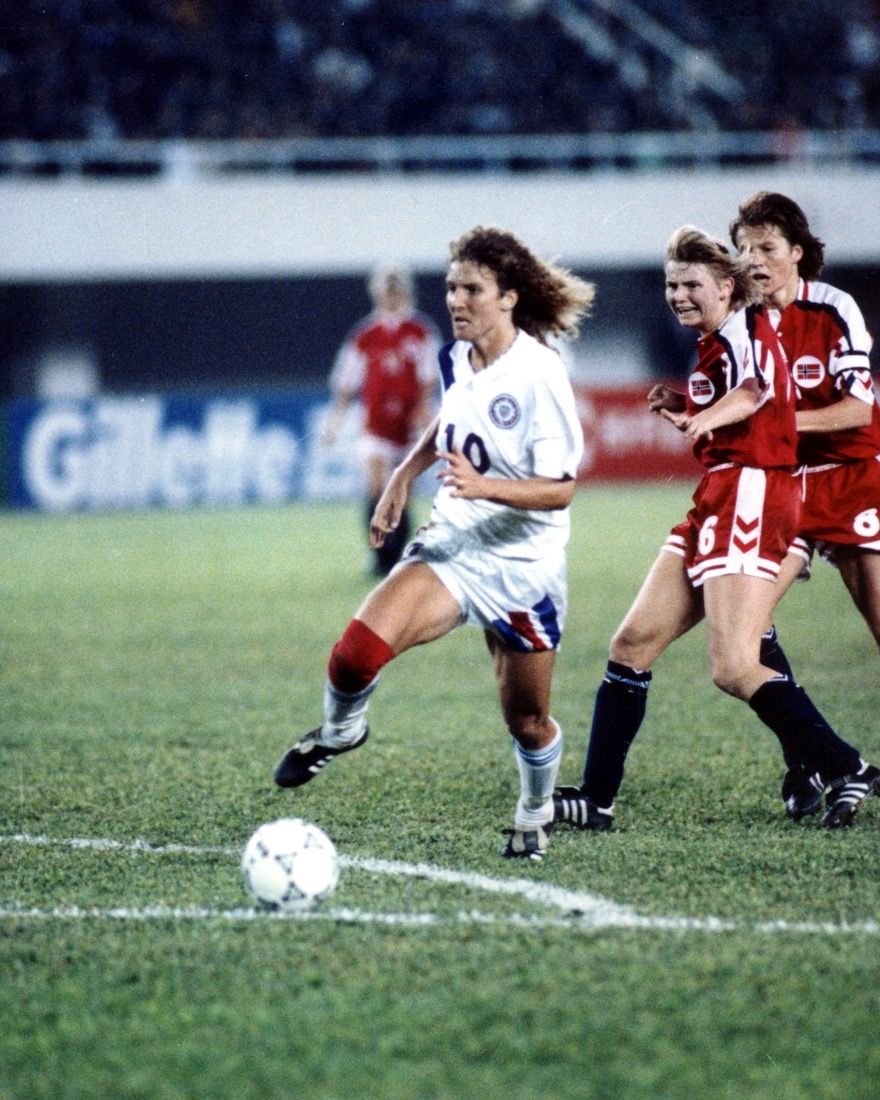
The world championship started the USA on a remarkable domination of women's soccer. In the ensuing 30 years, the Americans have won four World Cups (1991, 1999, 2015, 2019), finished second once and third three times. They also have had great success at the Olympic tournament, earning four gold medals (1996, 2004, 2008, 2012), a silver and a bronze.
It is easy to take this success for granted. In 1991, the USWNT program was but six-years-old at the time. While the team boasted many young talented players whose highest level outside of international competition was the nascent college game, the learning curve was steep. The squad embraced those lessons well, becoming battle-tested in friendly games against world’s best teams at that time - Norway, Sweden, Germany and China.
In what was a dress rehearsal for the 1991 World Cup, the USWNT experienced disappointment at the FIFA Women's Invitation Tournament in China in 1988, winning once in four matches. It started with a 5-2 win over Japan, followed by a 1-1 draw with Sweden and a scoreless tie with Czechoslovakia. The USA was eliminated via a 1-0 quarterfinal defeat to eventual champion Norway.
Another trip to China helped the young squad learn some more before it returned in November of 1991. They had learned proper road eating habits, how to get acclimated to the time change, how to recover quickly between matches and how to defeat their rivals.
With then and current University of North Carolina head coach Anson Dorrance directing the squad, the USA used nine current or former Tar Heels on the 18-player roster, adding some of the top talent from all corners of the USA. That included 19-year-old Mia Hamm and 20-year-old midfielders - Julie Foudy and Kristine Lilly.
"Anson, I guess was the perfect coach at the perfect time given the fact that so many of the top players played at North Carolina," Lilly said. “There was always a camaraderie. Coming together as a team was pretty amazing. He did a great job, creating that team and moving us in the direction that we are today."
Those training sessions were fierce and helped forged the reputation the squad has today - its ruthlessness on both sides of the ball.
"A lot of people back in the day was like, 'Oh, you guys didn't lose very much back then,' " Lilly said. "We might have not lost games but every day in practice we were on a winning or losing team, so you were losing in practice. We were so competitive in the practice environment. When we got to the games, we're like, 'Well, we don't want to lose,' so we were tearing people apart."
As the first World Cup tournament kicked off, the USWNT had played all of 58 international matches, 43 on the road. The Americans had compiled a 34-18-6 record.
In April of 1991, the U.S. women rolled through Concacaf qualifying, winning five matches while outscoring the opposition, 49-0. During that time, the team recorded an impressive 18-game winning streak (including 14 straight shutouts). The team did stumble to a 3-6-1 in its World Cup warm-up matches, losing to Norway twice and going winless vs. China (0-2-1).
Still, the team was confident.
"Entering the tournament, we absolutely felt the goal was to win the World Cup," Heinrichs said. “The question marks were: Could we manage the challenges of international opponents? You could play one team one day and two days later, you've got to play a completely different style, and two days later, a completely different style. Can you have good play consistently and can you get the ball to bounce in your way and anticipate people's mistakes? Can you have it all come together and players step up and play their role?"
The Americans' journey through the World Cup pitted them against the first three UEFA Women's champions - Sweden (1984), Norway (1987) and Germany (1989). They began against the Swedes, whom they had never beaten (0-1-1 at the time) and which boasted a brilliant midfielder, Pia Sundhage (who would direct the USWNT to a pair of Olympic gold medals and a second-place World Cup finish) before a crowd of 14,000 at Ying Tung Stadium, Guangzhou on Nov. 17.
Gabarra’s brace had given the Americans a two-goal advantage by the 49th minute. Hamm added another before the Swedes scored late as the USA held on for a 3-2 victory.
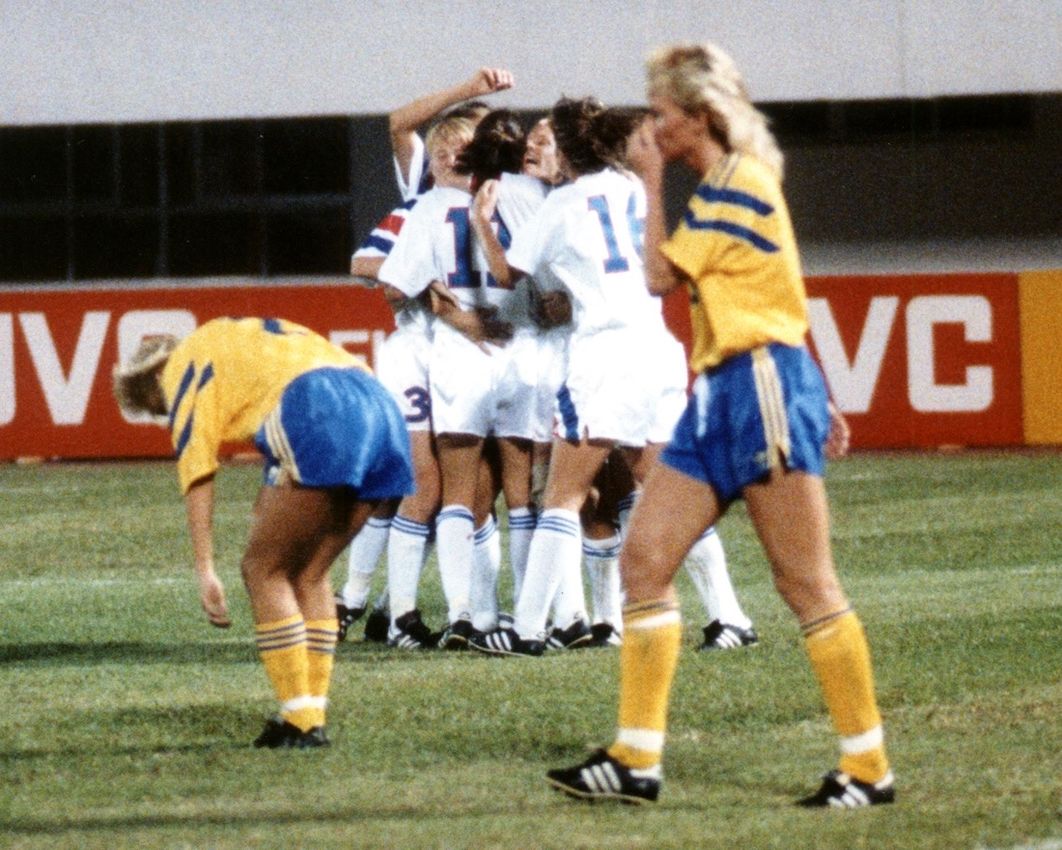
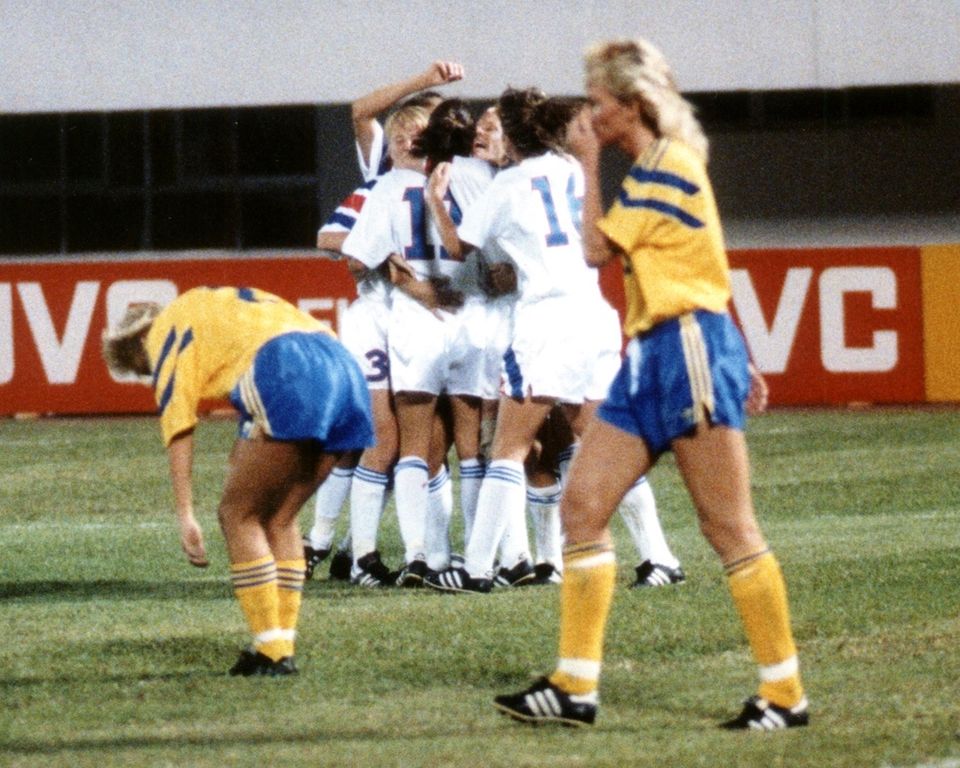
"The result was huge because I don't think we weren't good that game," Gabarra said. "We definitely didn't have our best game."
A great challenge was the opening round schedule in which teams had to play three matches within a five-day span. Like every side in the 12-team tournament, the Americans had one day to recover and to prepare for the next match.
"We were always fit," Lilly said. "Our training prepared us. We used to massage each other's legs in between the games. You didn't have the time to complain. It was to make sure we're rested, hydrated, focused."
The U.S. women overcame the short rest, romping to a 5-0 win over Brazil on Nov. 19. Heinrichs had a brace by the 35th minute as Gabarra, Akers and Hamm added goals.
Two days later, the Americans closed out a perfect group stage with a 3-0 win over Japan. Akers struck twice and Wendy Gebauer once.
The Chinese media dubbed the dynamic attacking triumvirate of Akers, Gabarra and Heinrichs the "Triple-Edged Sword." Combined, they scored 80 percent of the USA's goals over the entirety of the tournament (20 out 25). Akers led the way with 10, followed by Gabarra (six, plus three assists) and Heinrichs (four goals, two assists).
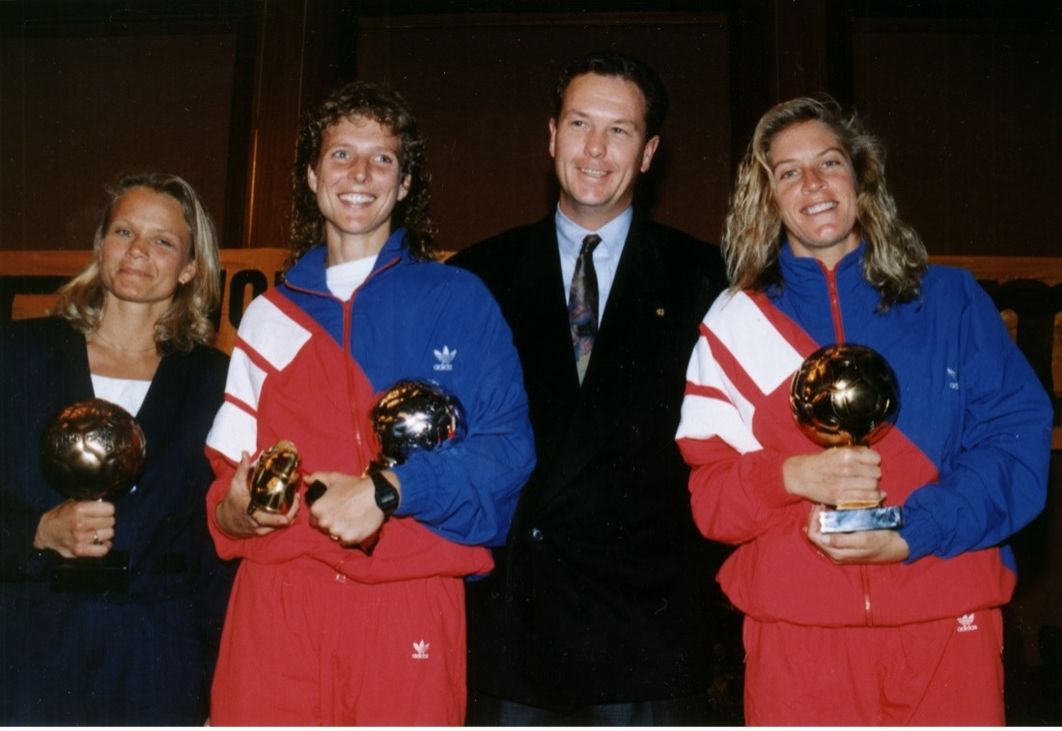

"It felt like a real compliment because in a lot of ways we thought China had a better soccer culture than us," Heinrichs said. "This was a really clever nickname.
"I was proud to be part of the three. Carin was the most dominant player and influential player for us in in that World Cup. Akers won the Golden Boot and I think of Michelle as the best soccer player I've ever played with."
Each player - now all members of the National Soccer Hall of Fame - brought a different skillset to the table. Akers was a ferocious goal-scorer. Gabarra could score and was a fantastic dribbler and playmaker. Heinrichs, the captain and a future USWNT head coach, had leadership abilities and could fill the net as well.
"Not many people realize this that all three of us were entirely different soccer players," Gabarra said. "Michelle, April and I played differently. We had different strengths and weaknesses. I think that's why it was so hard for the other teams to shut us down because if there was a game that wasn't within your realm of being very successful, you could do by another player on that frontline. We were all very, very different."
Heinrichs, the oldest player on the squad at 27, said that she has "often referred to myself as the dull edge" of the sword. She had some serious knee issues.
"I had a personal battle going on because I had knee surgery eight weeks before the World Cup," she said. "Would I be able to play? How fit was I really would my knee hold up? I was in a lot of pain I lived through that World Cup.
"Before the World Cup I went to Anson and said, 'Look, I know I'm not at my best. If you don't think I can contribute to us winning the World Cup don't start me.' I knew that this was a once in a lifetime chance. We cannot be selfish. We cannot be self-absorbed. We have to put the team in front of everything else."
Heinrich started five of the six matches.
The team was hardly a three-woman show, with talent and depth across the field. Goalkeeper Mary Harvey started every game, with Kim Maslin-Kammerdeiner and Amy Allmann as backups. Carla (Werden) Overbeck, Joy (Biefeld) Fawcett, Linda Hamilton, Lori Henry and Debbie Belkin formed the backline. Shannon Higgins, a superb playmaker, Tracey (Bates) Leone, Foudy and Hamm were in the midfield with Brandi Chastain, Gebauer, Akers (Akers-Stahl at the time), Heinrichs and Gabarra (Jennings) up front. Ten players from the 1991 Women’s World Cup Team are in the National Soccer Hall of Fame.
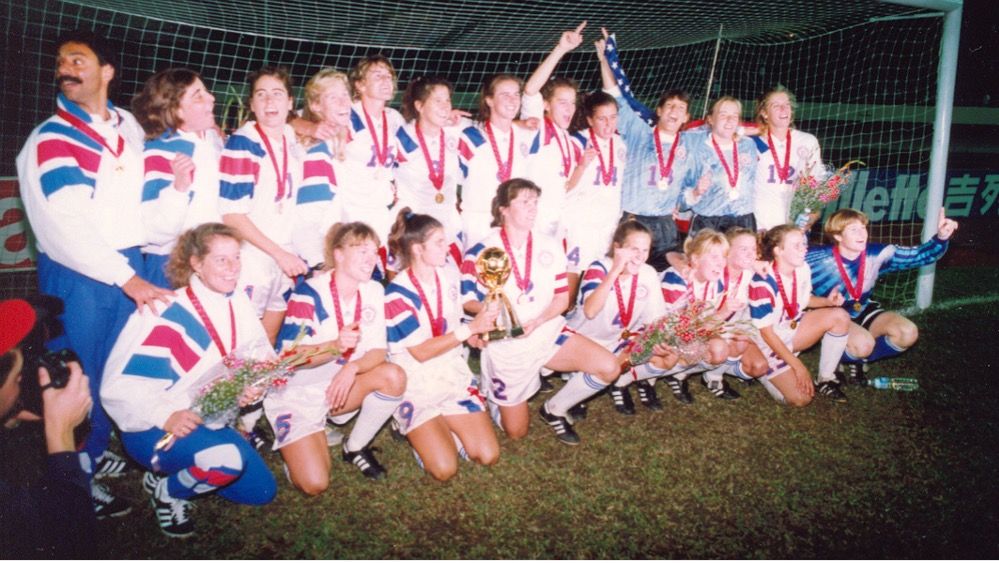
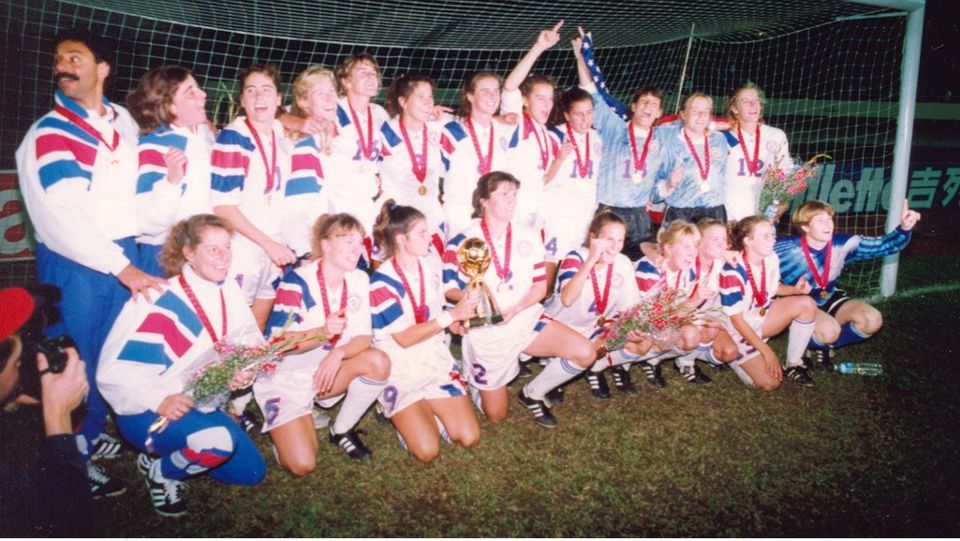
Due to their World Cup commitments, Lilly, Hamm and Dorrance were forced to miss North Carolina's championship run in the NCAA Division I tournament, the Tar Heels' ninth title in 10 years.
Teams got an extra day's rest for the knockout round and the USWNT rolled over Chinese Taipei, 7-0. Akers struck for five goals, including four in the opening half, tallying in the eighth, 29th, 33rd, 44th (on a penalty kick) and 48th minutes. Foudy and Fawcett also scored.
Between the quarterfinals and semifinals, Heinrichs held a team meeting in her room.
"We went around the room and almost everybody spoke up," she said. "It felt like a watershed moment, giving [us] even a deeper bond than we previously had. I had this confidence. We're going win it."
Before enjoying a Thanksgiving Day feast on Thursday, Nov. 28, the USA feasted on Germany a day prior, 5-2. The Germans had won their four matches, outscoring its foes, 11-1. Gabarra secured a first-half hat-trick (10th, 22nd, and 33rd minutes) before Germany found the net. Heinrichs gave the Americans more breathing room with two second-half scores.
Lilly said Gabarra "had a game her life. I played right behind her at left midfield. I was catching myself watching her just tear up the defenders."
Gabarra said she matched up well with the Germans. "At halftime we knew that there was a lot of soccer to be played,” she added. “If we could score three goals in that amount of time, they certainly could. We had to really stay focused to continue our level."
Then came a memorable Thanksgiving dinner with players’ families with a special guest – Pele.

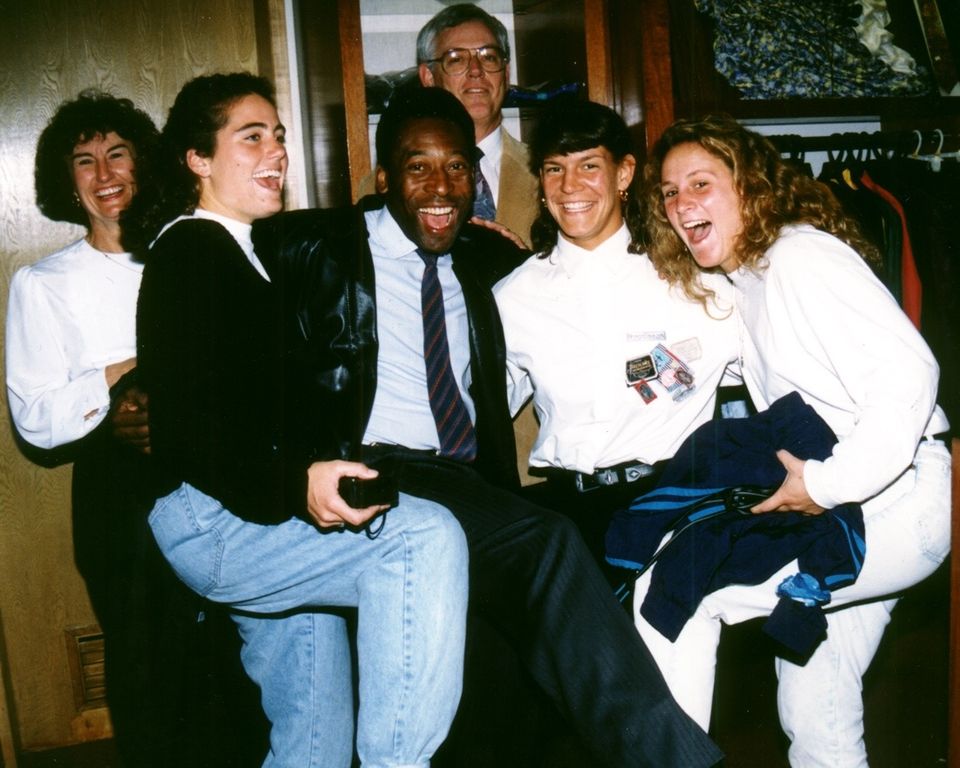
"We got to celebrate. We had a huge meal," Gabarra said. "Pele was there with us because he considered himself American to some degree. He had that meal with us ... What a wonderful human being."
Gabarra added that Thanksgiving "gave us some downtime away from the game, which is something that was pretty necessary in the middle of a major tournament with so many games so few days."
Having families at the tournament was vital.
"Anytime you're away, it's hard but the National Team became your second family because you're traveling so much with them," Lilly said. “It was pretty neat."


Preparing the proper meals were a challenge on the road, so the team brought along two chefs' - Anson Dorrance's brother, Pete, and Carla Overbeck's husband Greg. They either cooked or advised hotel cooks on the proper goods and preparation.
On the other side of the bracket, the Norwegians were routed by China in their group opener, 4-0, but then won four successive matches to get to the championship game. That included a 4-1 semifinal win over Sweden as Norwegian legend Linda Medalen scored twice.
The USWNT had struggled against Norway with a 1-4-0 record, including losses (2-1 and 1-0) on American soil the previous summer.
Six World Cup matches were jammed into 14 days, and it had begun to take its toll.
"I felt like we met Norway on three-quarters of a tank of gas. They were they were full-fledged flying because they lost their opener against China," Heinrichs said. "There was an embarrassing element. You think your World Cup hopes are dead.”
A crowd of 63,000 packed Tianhe Stadium in Guangzhou on Saturday night, Nov. 30 to watch the two best women's soccer teams tussle in the 80-minute match (FIFA switched to 90 minute games for the 1995 World Cup).
"It was not the most beautiful final," Heinrichs admitted.
As it did in its previous five matches, the USA drew first blood. In the 20th minute Akers headed in Higgins' free kick. The Norwegians equalized on Medalen's goal nine minutes later.
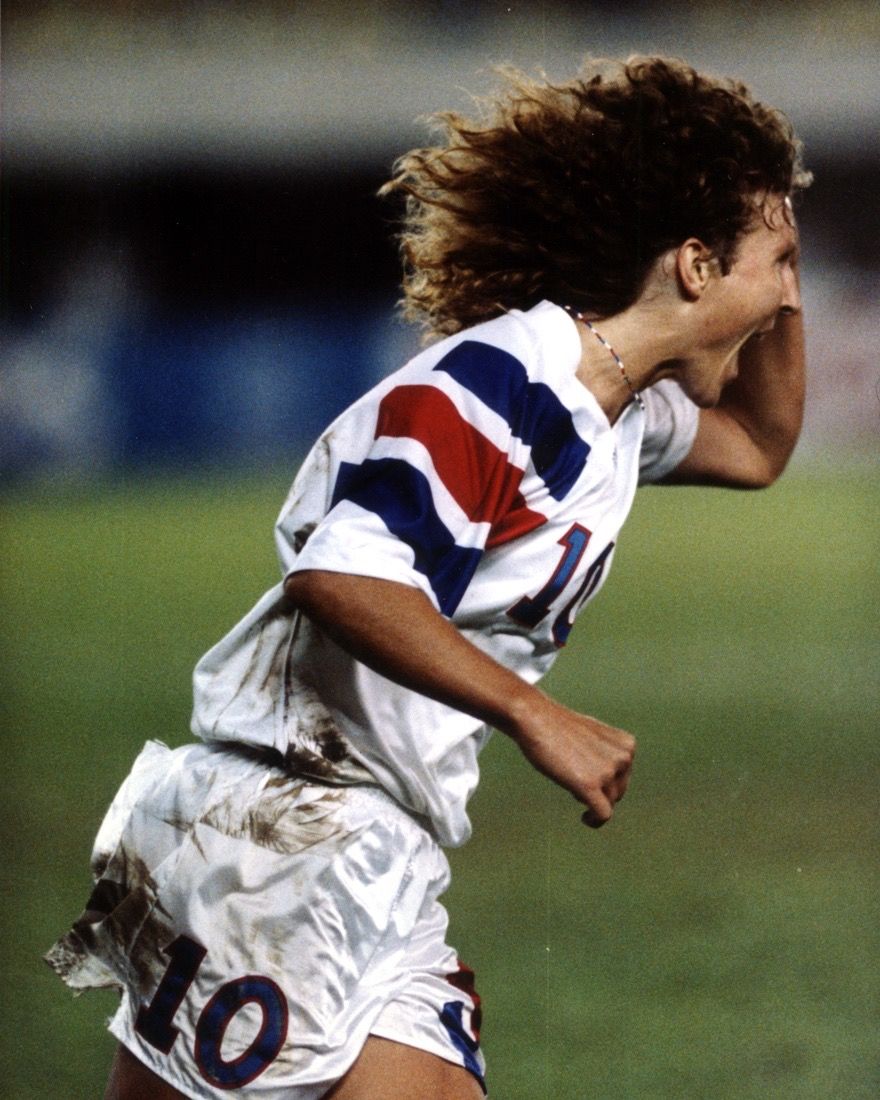
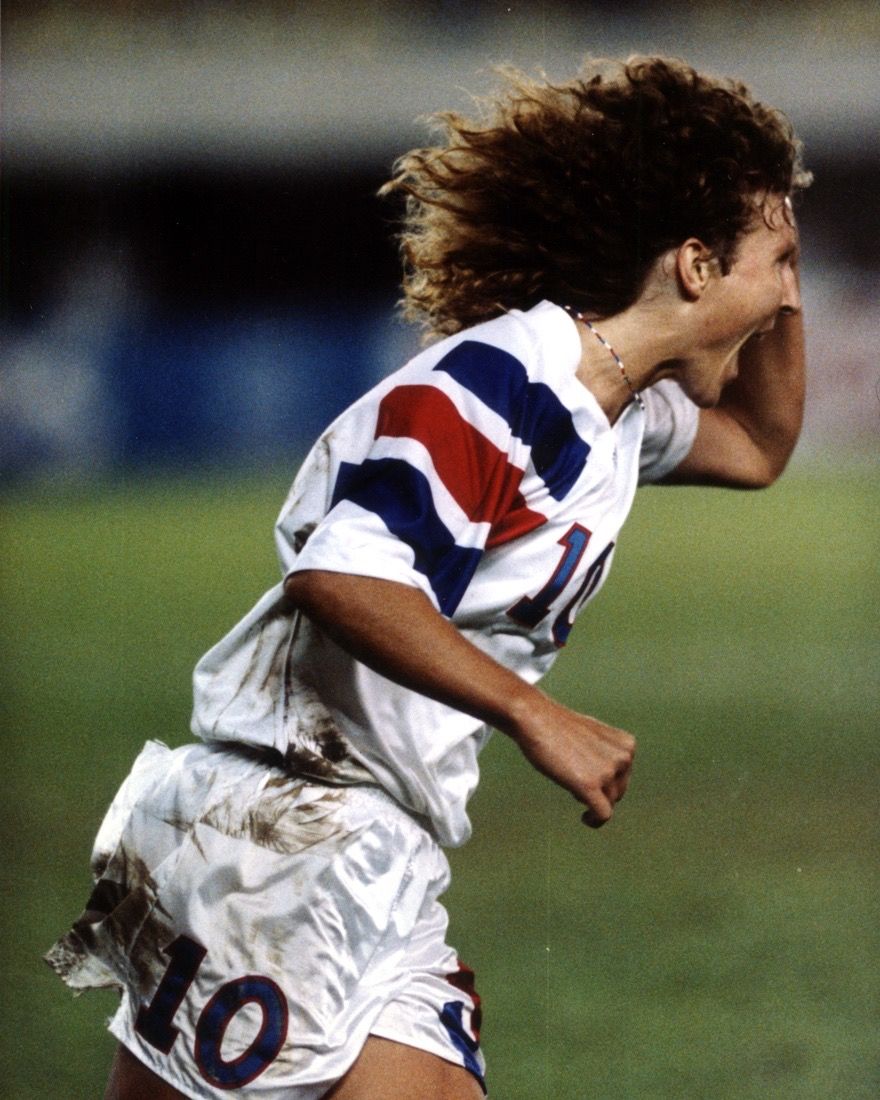
"We had not been even with any team in that tournament," Gabarra said. "It was a defining moment and how we fought or how we reacted after they scored."
Norway enjoyed the second-half territorial advantage, but the USA broke through in the 78th minute. Akers intercepted a back pass, rounded the ‘keeper on the left side of the box and scored.
"It's typical Michelle," Gabarra said. “You fight, you battle, you scrap the play to the to the final whistle and everyone's tiring. But not Michelle. She created something out of nothing. It took forever just because she wanted to run around and make sure she scored with the right foot, but she had the time to do that."
The final two minutes also took an eternity.
"I just remember the time just took forever for them to blow the darn whistle," Lilly said.
Finally, referee Vadim Zhuk of the Soviet Union blew his whistle twice and the Americans were champions.
"Just pure elation," said a physically and mentally drained Gabarra.
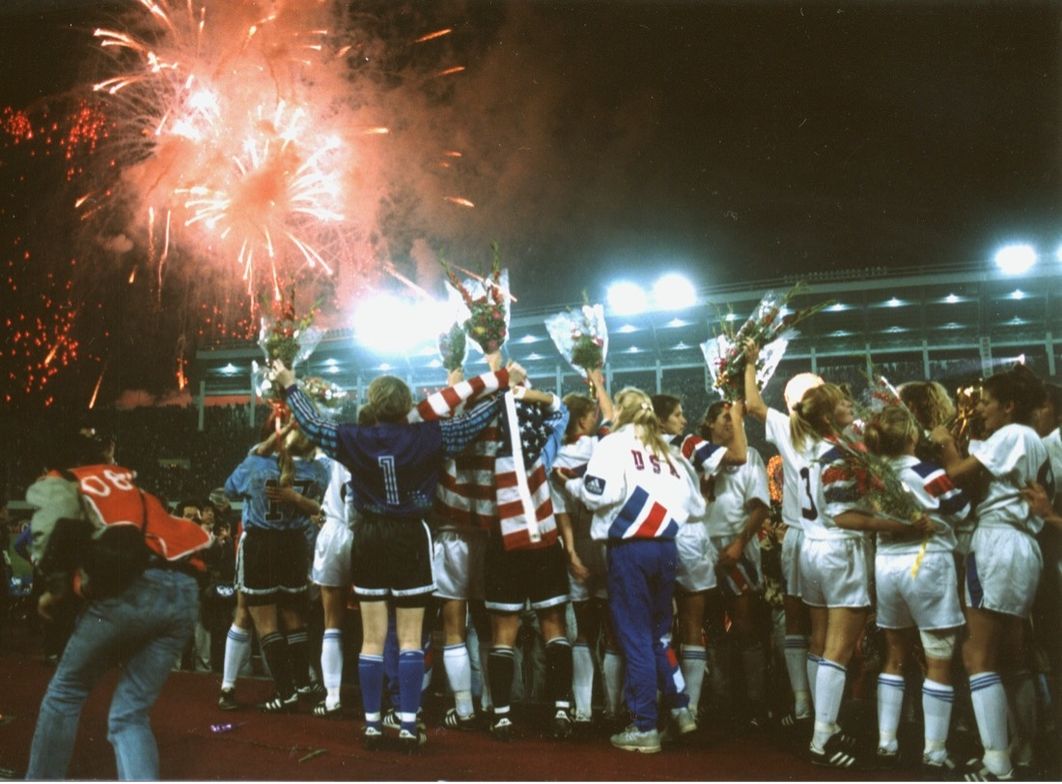

"So happy. It was just holy cow! We just won the first World Cup," Lilly said. "We all knew that no one thought the U.S. was going win. We had a big dogpile. Just so much happiness."
Heinrichs was handed the M&M’s Cup – the tournament’s sponsor - and the team took a victory lap.
After almost a day on planes, the squad landed in New York on Dec. 2. In contrast to the reception the UWSNT received when it returned home from Canada in 2015 and France in 2019, several U.S. Soccer officials, U.S. Men’s National Team head coach Bora Milutinovic, three reporters, a photographer and Swiss Air officials, who gave each player a rose, greeted the team at JFK Airport.
The players did not stay long in the terminal. They had connecting flights to return home.
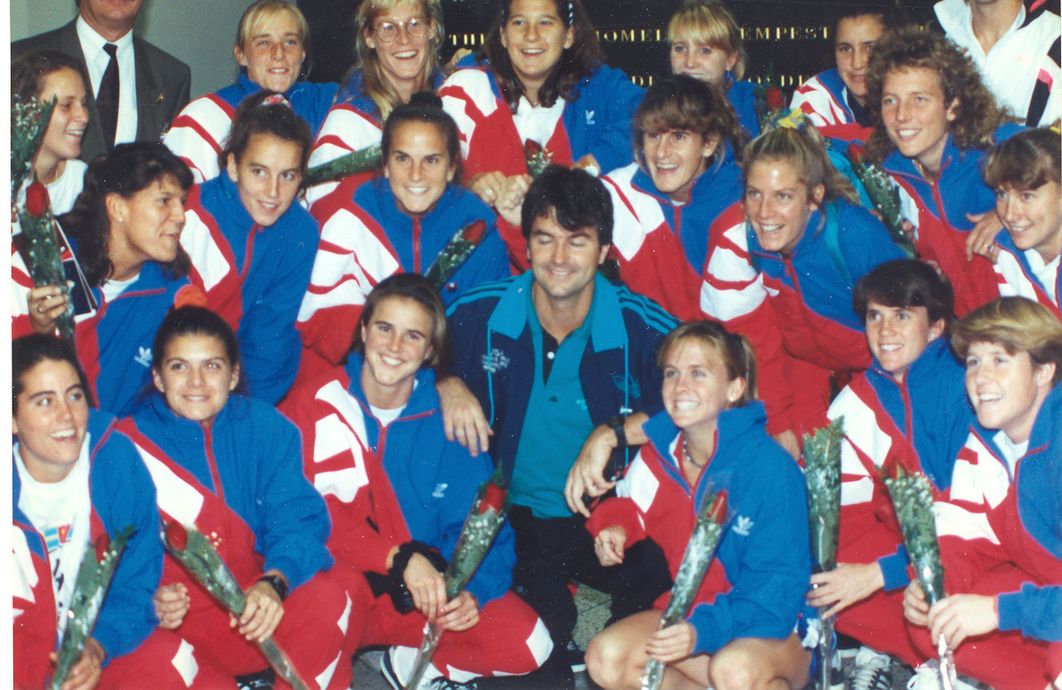
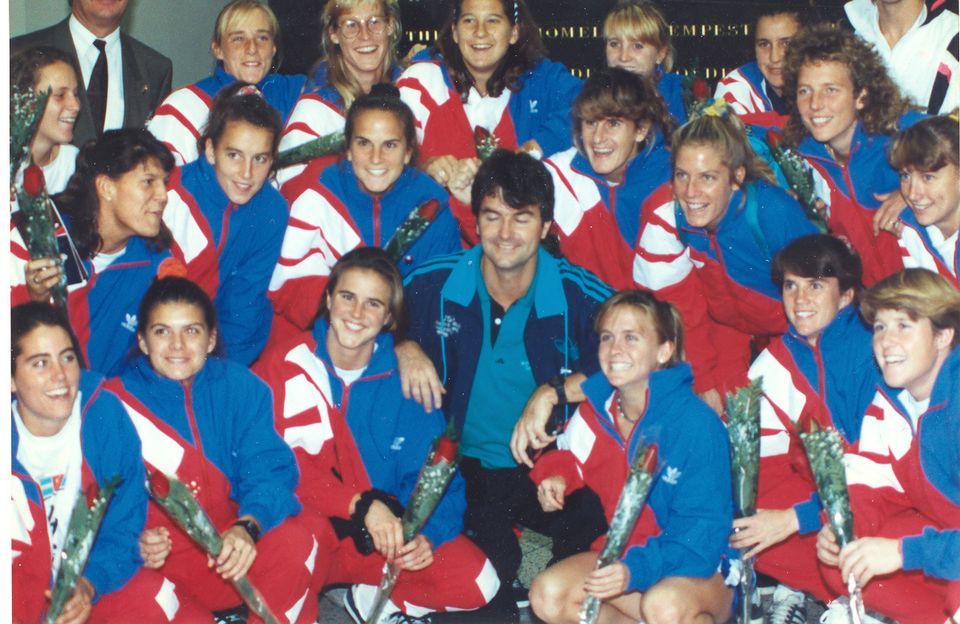
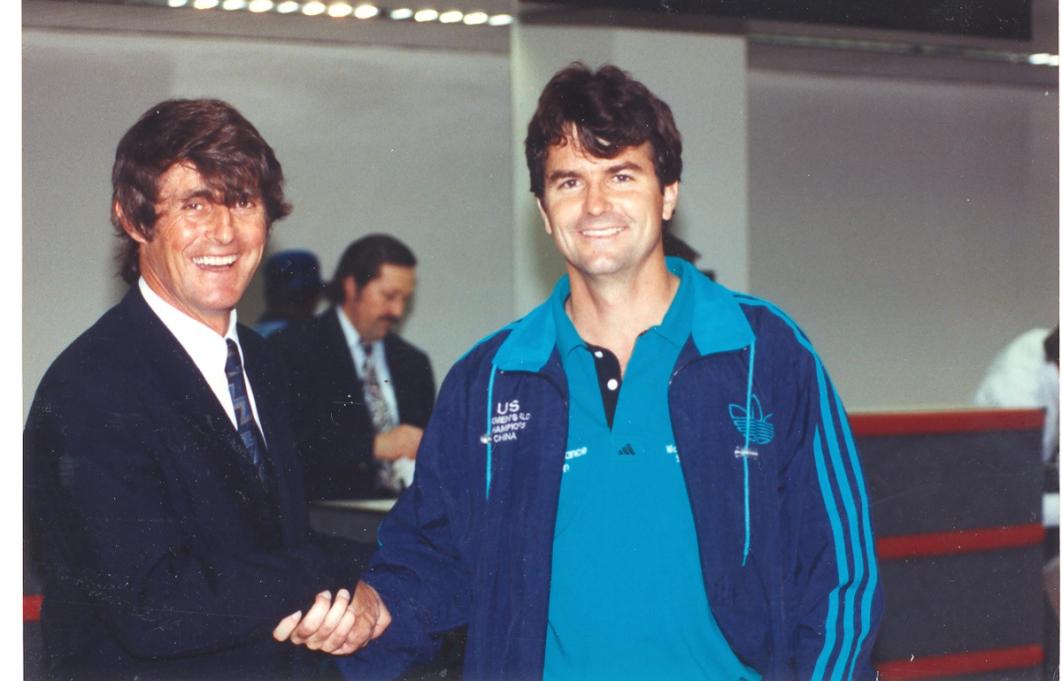
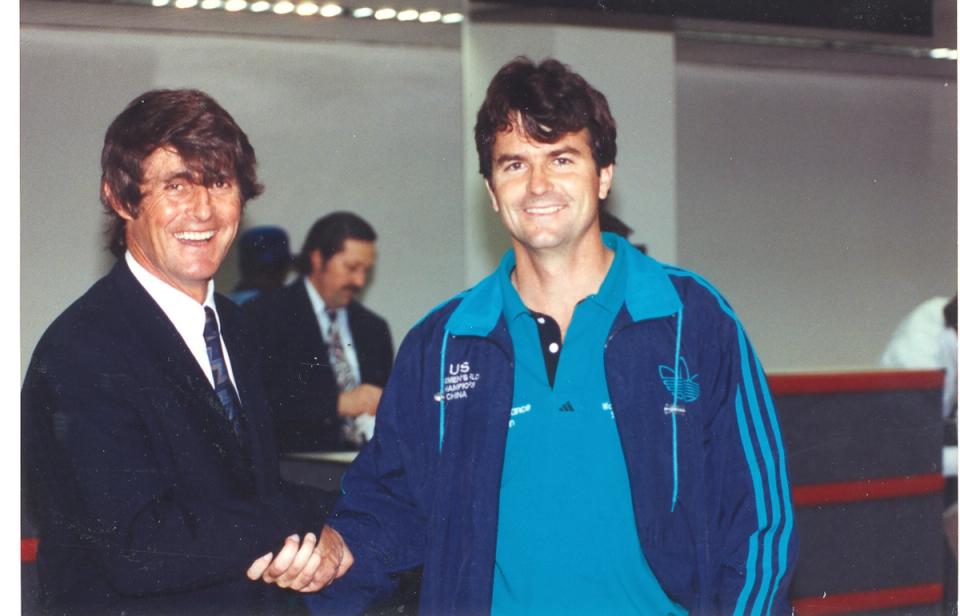
No one knew if this was going to be a one-off thing or the start of something big. At the time, the next World Cup was not scheduled.
"The ache was real and the departures at the airport, you're just hugging on and hanging on to your teammates saying goodbye," Heinrichs said. "I was close to many of them. But it really did feel like the end, not the beginning of women's soccer. It felt like the end of one team's journey with a whole lot of uncertainty about the game."
In the three decades since, the team rarely has missed a beat.
"That was the start of something incredible," said Lilly, who was proud “to see that continue what was started in that first World Cup from the mentality to being the fittest, being competitive, always wanting to win no matter if you were playing practice or game."
Gabarra added: "Anyone that's ever played for that team is a part of the legacy and part of that U.S. Women's National Team. It's special because we continue to be dominant, and we continue to win big tournaments. Everybody also has the ability to fight for what they believe in. It's a really special group to be a part of."




